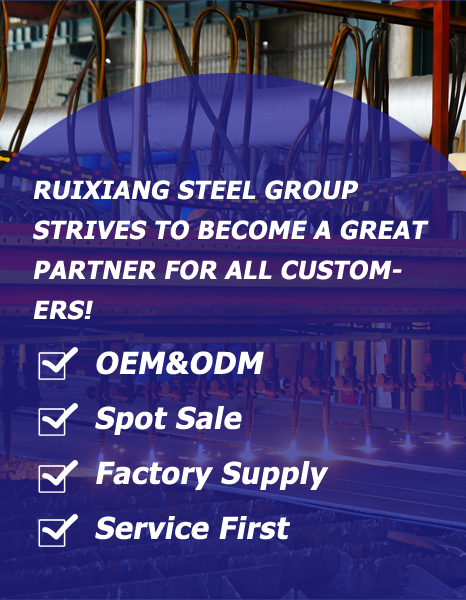What is Spangle? Understanding the Different Types on Galvanized Steel
 Click:178Edit: Admin
Click:178Edit: Admin Time:2025-10-04 17:30:26
Time:2025-10-04 17:30:26
What is Spangle? Understanding the Different Types on Galvanized Steel
When you look at a galvanized steel surface, you'll often notice a distinctive crystalline pattern shimmering back at you. This pattern, known as "spangle," is more than just aesthetic—it's a visual representation of the zinc coating's crystalline structure that forms during the cooling and solidification process. At Ruixiang Steel Group, we believe understanding spangle types is crucial for selecting the right galvanized steel for your specific application.
The Science Behind Spangle Formation
Spangle refers to the crystalline pattern visible on the surface of hot-dip galvanized steel sheets. These patterns emerge as the zinc coating cools and solidifies after the steel passes through the molten zinc bath. The process begins when the steel sheet exits the zinc pot, and the zinc layer begins to crystallize.
The size and appearance of these zinc crystals are influenced by several factors, including the chemical composition of the zinc bath and the cooling method employed during production. When the zinc coating starts to solidify, the pure zinc crystals typically form what appears as an approximate snowflake-like hexagonal star shape under ideal conditions. The most perfect zinc flowers present a complete six-pointed star shape, though actual appearances may vary based on production conditions.
Main Types of Spangle in Galvanized Steel
Regular Spangle (Large Zinc Flower)
Regular spangle, also known as large zinc flower, features visible crystalline patterns typically larger than 3mm in diameter, with the internationally recognized optimal size being 8-12mm. This type of spangle forms naturally when zinc solidifies under standard cooling conditions, often with the addition of elements like lead or antimony to the zinc bath to promote crystal growth.
While traditionally popular for its distinctive appearance, regular spangle has some drawbacks. The surface tends to be uneven, and the presence of certain alloy elements in the zinc coating may potentially accelerate electrochemical corrosion, reducing the material's lifespan by 15-20%. Many developed countries have moved away from large zinc flower products in favor of more uniform alternatives.
Minimized Spangle (Small Zinc Flower)
Minimized spangle, or small zinc flower, features much finer crystalline patterns typically 1-2mm in diameter. This is achieved through specialized processes such as spraying zinc powder or steam onto the zinc layer before solidification, creating more nucleation sites that result in smaller, more numerous crystals.
The smaller pattern provides a more uniform surface appearance compared to regular spangle, making it preferable for applications where appearance matters but a completely smooth surface isn't essential.
Zero Spangle (No Visible Zinc Flower)
Zero spangle galvanized steel has a smooth, uniform surface with no visibly discernible crystalline patterns to the naked eye. This surface is achieved primarily through chemical composition control—specifically by adding aluminum to the zinc bath while avoiding elements like lead, antimony, or tin that promote crystal formation.
The absence of visible spangle creates a consistently even surface that provides an excellent base for painting and further processing. This makes it ideal for applications requiring subsequent coating or where a uniform appearance is critical.
Extra-Smooth Surface (Temper Passed)
Beyond the basic spangle types, some galvanized steel undergoes an additional process called temper passing or skin passing. This involves lightly cold-rolling the galvanized steel through a temper mill, which further flattens the surface and can eliminate any remaining minor irregularities.
This process creates what's known as an extra-smooth surface, which provides the flattest and most uniform finish available, particularly valuable for demanding applications such as deep drawing or high-quality painting.
International Standards and Classification
Different countries have established standards for classifying spangle types. The Chinese standard (GB/T 2518-2019) categorizes them as Normal spangle (N), Zero spangle (F), and Minimized spangle (M). The Japanese standard (JIS G3302-2019) uses Regular spangle (R) and Minimized spangle (Z), while the European standard (EN 10346-2015) refers to them as Normal spangle (N) and Minimized spangle (M).
Understanding these classifications is important when specifying materials for international projects or when working with suppliers from different regions.
How Spangle Type Affects Performance and Applications
Surface Characteristics and Paintability
The type of spangle significantly impacts the steel's surface characteristics. Regular spangle typically has a more textured surface with visible variations, while zero spangle offers a consistently smooth surface. Research has shown that galvanized steel with a high percentage of spangle grains oriented with specific crystal planes parallel to the sheet surface demonstrates superior paint adherence.
For painting applications, zero spangle and extra-smooth surfaces generally provide the most uniform finished appearance, as the paint coating doesn't highlight underlying variations in surface texture. Regular spangle may show through paint, creating a non-uniform appearance that may not be desirable for all applications.
Formability and Mechanical Properties
The spangle type can influence the material's formability. Studies have revealed that larger angles between the spangle crystal planes and the steel surface make the zinc layer more prone to cracking when subjected to tensile or bending stresses. This means that regular spangle with significant surface variation may be more susceptible to micro-cracking during severe forming operations compared to the more uniform zero spangle.
Corrosion Resistance
While the zinc coating thickness primarily determines corrosion resistance, spangle type can indirectly affect longevity. The presence of certain elements (like lead or antimony) used to create regular spangle may potentially accelerate electrochemical corrosion under some conditions. Additionally, the dendritic structure in some spangle types, particularly those with larger angles between crystal planes and the steel surface, may show higher density of white rust formation under corrosive conditions.
Choosing the Right Spangle Type for Your Application
When to Choose Regular Spangle
Regular spangle may be appropriate for:
Structural applications where appearance is secondary to function
Traditional architectural styles where the classic galvanized look is desired
Applications not requiring painting or further surface treatment
When to Choose Minimized Spangle
Minimized spangle strikes a balance between the classic galvanized look and a more uniform surface, making it suitable for:
Visible structural components where some pattern is acceptable
Applications requiring moderate surface uniformity without the need for perfect smoothness
When to Choose Zero Spangle or Extra-Smooth
These spangle types are recommended for:
Applications requiring painting or coating
Automotive components and appliance manufacturing
Architectural panels where a uniform appearance is critical
Deep drawing applications and precision-formed parts
Ruixiang Steel Group's Expertise
At Ruixiang Steel Group, we provide comprehensive technical guidance to help you select the optimal spangle type for your specific application. Our product range includes all spangle types, ensuring we can meet diverse customer requirements across construction, automotive, appliance, and general manufacturing sectors.
Understanding spangle types empowers you to make informed decisions about galvanized steel selection, ensuring optimal performance, aesthetics, and value for your projects. Contact our technical team today to discuss how different spangle types can enhance your specific applications.
 Click:178Edit: Admin
Click:178Edit: Admin Time:2025-10-04 17:30:26
Time:2025-10-04 17:30:26

